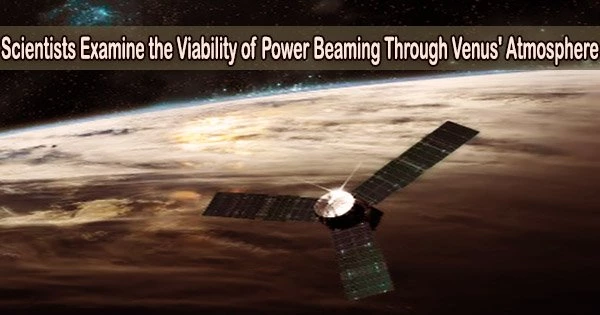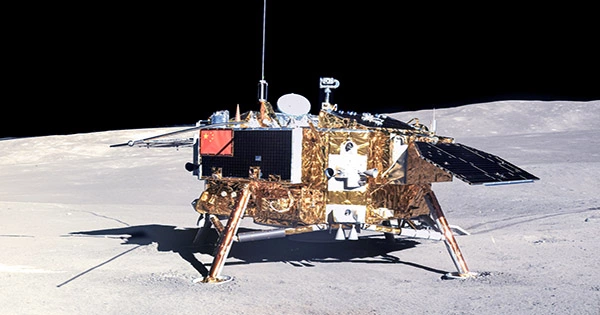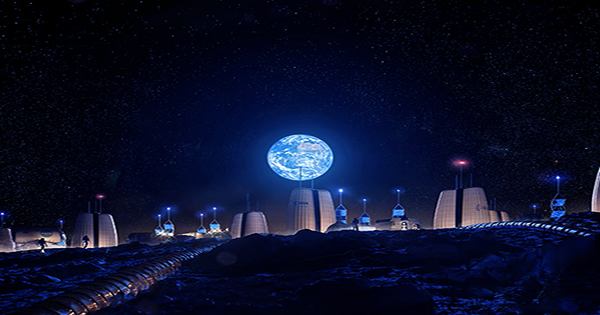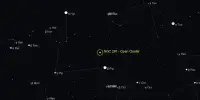A group of Caltech researchers reported that they had successfully sent electricity from an orbiting satellite down to Earth a few weeks ago. Even though it wasn’t much energy, it demonstrated that it was feasible.
In the future, we might be able to beam solar energy down to Earth, making it accessible practically anywhere and assisting in the fight against climate change. But there’s another potential use: powering surface probes on Venus.
Everybody knows about Venus. Its intense heat and crushing atmospheric pressure have claimed the lives of numerous landers. Many of the probes the previous Soviet Union dispatched to the planet’s surface were unsuccessful. The most successful one was Venera 13, which survived for just over two hours at 457 °C (855 °F), and was subjected to 9.0 MPa (89 standard atmospheres) of pressure.
Despite Venera 13’s brief but significant success, the planet held onto its secrets, and we’re drawn back to its surface to reveal them. That’s why NASA wants to send a lander to the surface as part of its DAVINCI+ mission (Deep Atmosphere Venus Investigation of Noble gases, Chemistry, and Imaging.)
However, there is the issue of how to power a lander on Venus’ peculiar, hazardous surface, presuming we can construct one that won’t succumb to the planet’s harsh circumstances readily. Solar electricity, batteries, and radioisotope thermoelectric generators are common solutions, although they are inadequate.
That’s according to new research titled, “Feasibility of power beaming through the Venus Atmosphere,” published in the journal Acta Astronautica. The corresponding author is Erik Brandon from the Jet Propulsion Laboratory.
“State-of-the-art space power technologies comprising solar arrays, batteries and radioisotope thermoelectric generators are not capable of operating on the surface of Venus, limited by the high temperatures, high pressures and corrosive environment,” the authors explain.
Venus is closer to the sun than Earth, yet because of its dense atmosphere, little solar radiation reaches the planet’s surface. Only approximately 2.5% of the solar flux incident at the top of the atmosphere reaches the surface of Venus, where clouds reflect roughly 75% of the sun’s energy. Solar energy abounds above the clouds. The top of Venus’ atmosphere receives twice as much solar radiation as the top of Earth’s atmosphere.
State-of-the-art space power technologies comprising solar arrays, batteries and radioisotope thermoelectric generators are not capable of operating on the surface of Venus, limited by the high temperatures, high pressures and corrosive environment.
The authors
Could this abundant energy be harnessed by solar collectors above the clouds and then beamed down to a lander/rover? It would have to make it through a lot of thick clouds.
“The feasibility of such an approach and other related mission concepts are discussed herein from a perspective of atmospheric absorption and scattering of the beamed energy,” the paper states.
Beaming energy from one place to another is called wireless energy (or power) transfer. There are two types: near-field and far-field. Short-range energy transfer, such the kind seen in mobile device charging stations, is known as near-field. Far-field energy transmission, commonly known as power beaming, beams energy from a producer to a receiver using microwaves or lasers.
The difficulties in a Venus geostationary orbit make beaming electricity from an orbiting solar collector to a surface vehicle difficult. The geostationary orbit is unstable because the planet rotates so slowly and is so far away from it. A solar collector would have to be placed nearer to the planet in some way.
At an altitude of 60 or 70 km, above the top clouds, a collector would practically receive all of the sunlight. The collection, or group of collectors, may need to be kept in the proper position and altitude during mission design.
An alternate solution is to beam a portion of energy to a lander on each orbit, which could be enough. “Hundreds of Wh (Watt hours) of energy could be received over the course of several orbital passes of the lander,” the authors explain.
But those are larger issues of overall mission architecture. This study makes the supposition that the issue can be solved. The authors of this work concentrate on how to beam and receive energy, an area that hasn’t received much in-depth research.
“However, to date, there has not been a thorough study regarding the feasibility of transmitting power at relevant wavelengths, if a suitable platform and mission architecture could be devised and implemented,” the authors write.
Venus’ dense atmosphere and presence of compounds that obstruct microwave power beaming are the difficulty. CO2 concentrations are a particular problem.
Lasers might be a better option. Even though there are problems with the dense atmosphere, there are certain “frequency windows” in the atmosphere that could allow power-beaming with lasers.
“Counterintuitively, power beaming via laser sources may be possible at Venus despite the continuous cloud coverage, given certain optical/infrared ‘windows’ present within the Venus atmosphere, which are not available using microwave power beaming,” the authors write.
Lasers have other advantages, too, like reduced beam spreading compared to microwaves. That means receiving antennae don’t need to be as large. A one-meter receiver might be sufficient and wouldn’t be too cumbersome to interfere with a lander’s construction.
While Venus’ upper atmosphere is rich in solar energy, sending it down through the entire atmosphere might not be the ideal strategy. An alternative would be for a balloon or other vehicle to position itself close to the center of the atmosphere. It would just need to beam the energy across a part of the atmosphere since there it would receive enough solar energy to be practical.
The research shows that the 47 km altitude is significant. There’s a cloud base at that altitude, and below it, the beamed energy is subject to less scattering. It also shows that from 47 km, the highest transmission factor is at 1022 nanometers, where about 20% of the beamed energy would reach a surface lander.
“These calculations point to a plausible approach for power beaming at Venus, using transmission from an aerial platform operating near the cloud base,” the authors write.
But does the technology to do this exist? What kind of vehicle or platform might be employed at an altitude of 47 kilometers is not covered in the paper. They concentrate on power beaming itself and if calculations support it. But they also talk about available laser technology and if it’s up to the task.
According to the researchers, we don’t quite have the right kind of laser yet.
Researchers are busy developing them, though. Ytterbium-doped fiber lasers (YDFLs) that work in the near-infrared (NIR) window that can also operate at high power are under development. Unfortunately, they don’t operate at the ideal wavelength for use at Venus: 1022. Instead, they’re limited to two other ranges: 970–980 nm and 1030–1100 nm. But lasers are an intense focus of different researchers around the world, and progress is steady.
Any power-beaming mission must maintain some sort of flying platform steady and in the proper place. However, scientists are already developing aerial devices for use on Venus, including balloons. The authors are optimistic that a power-beaming scenario can meet the challenge and produce successful trips to the surface of Venus, assuming they can be created.
“Also, although there are engineering and mission design challenges regarding control and pointing of such an aerial vehicle platform used for power beaming and in overall thermal management, this analysis shows that these optical windows could be exploited to enable sufficient mission-enabling power levels to be beamed to the surface of Venus.”
We need a better understanding of Venus’ atmosphere before a specific system can be designed. DAVINCI+ has three main scientific objectives, and one of them is to understand the atmosphere as it travels through it.
Scientists will be able to better grasp the challenges they confront while beaming power to the planet’s surface thanks to its discoveries. If it can be done reliably, then Venus will be open to exploration.
















